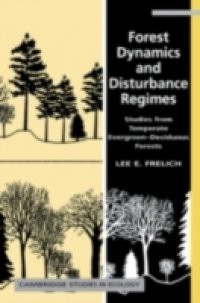Temperate-zone forests have been shaped by fire, wind and grazing over thousands of years. This book provides a major contribution to the study of their dynamics by considering three important themes: * The combined influence of wind, fire and herbivory on the successional trajectories and structural characteristics of forests * The interaction of deciduous and evergreen tree species to form mosaics which, in turn, influence the environment and disturbance regime * The significance of temporal and spatial scale with regard to the overall impact of disturbances These themes are explored via case studies from the forests in the Lake States of the USA (Minnesota, Wisconsin and Michigan) where the presence of large primary forest remnants provides a unique opportunity to study the long-term dynamics of near-boreal, pine and hardwood-hemlock forests. The comparability of these forests to forests in other temperate zones allows generalizations to be made that may apply more widely.

